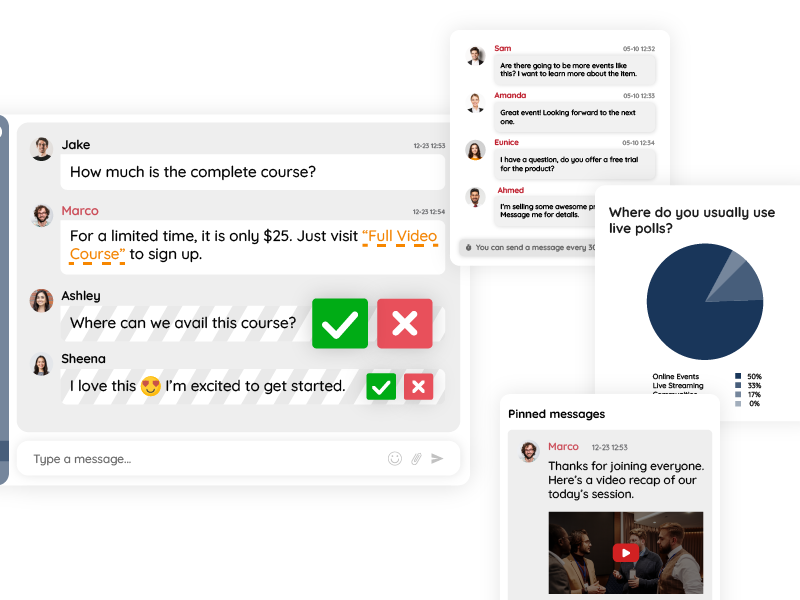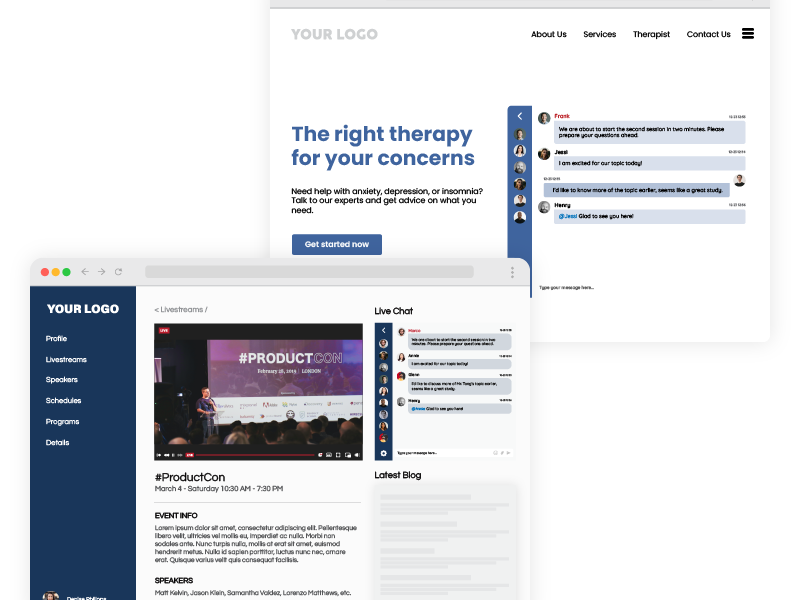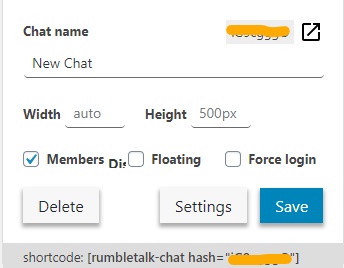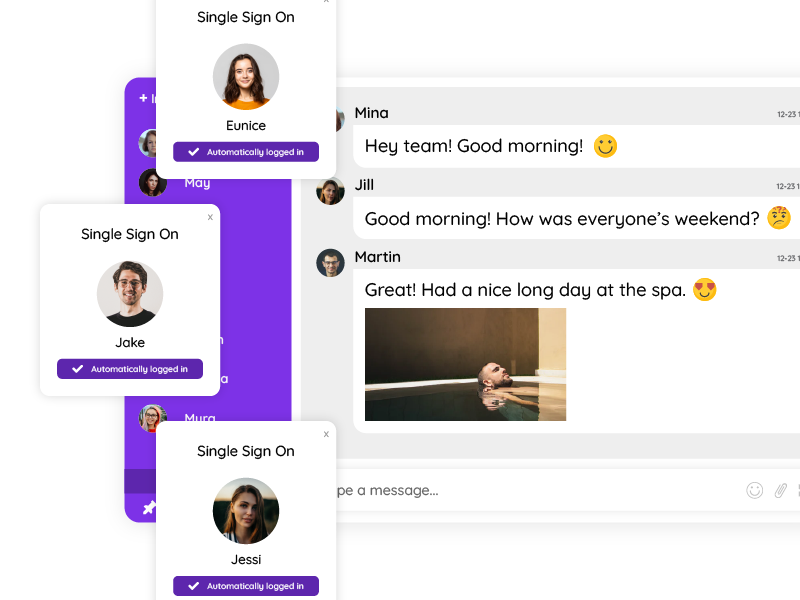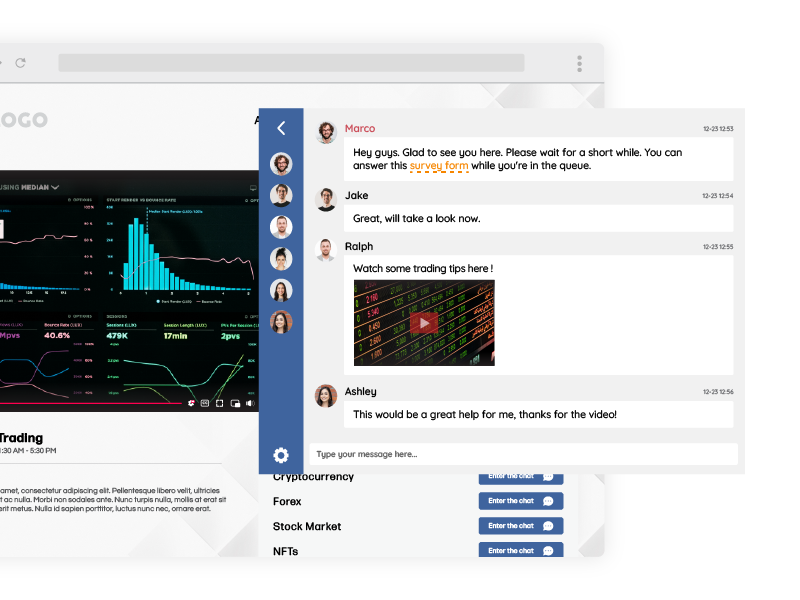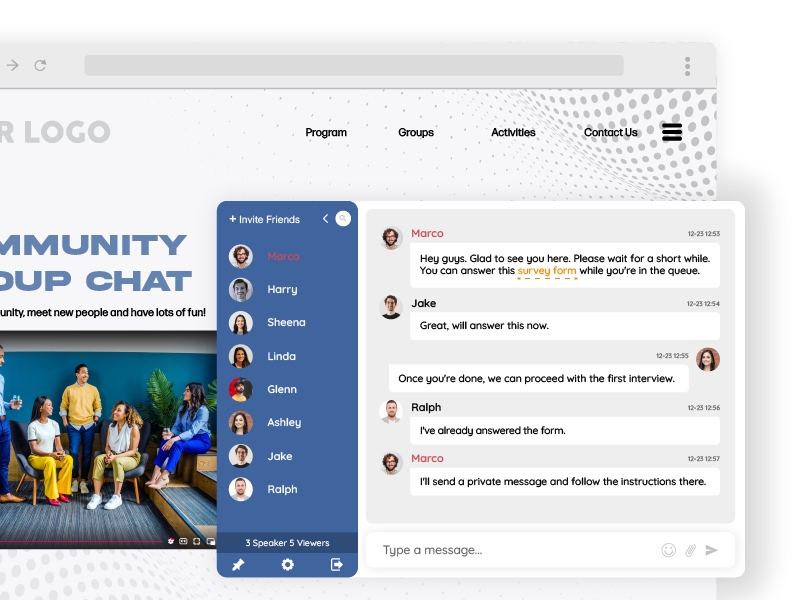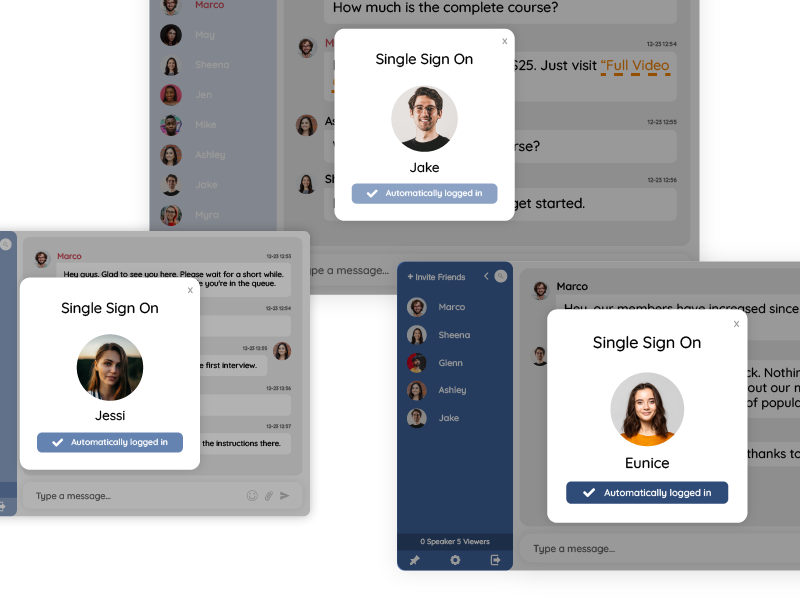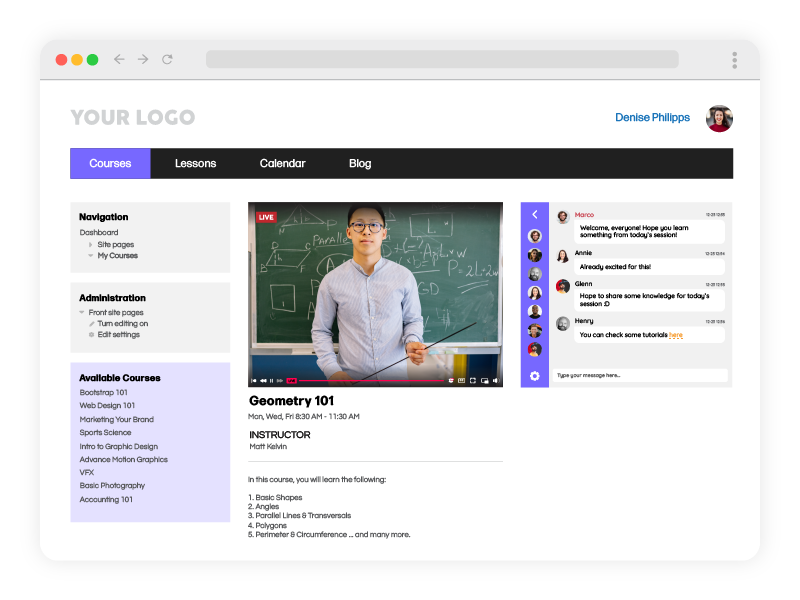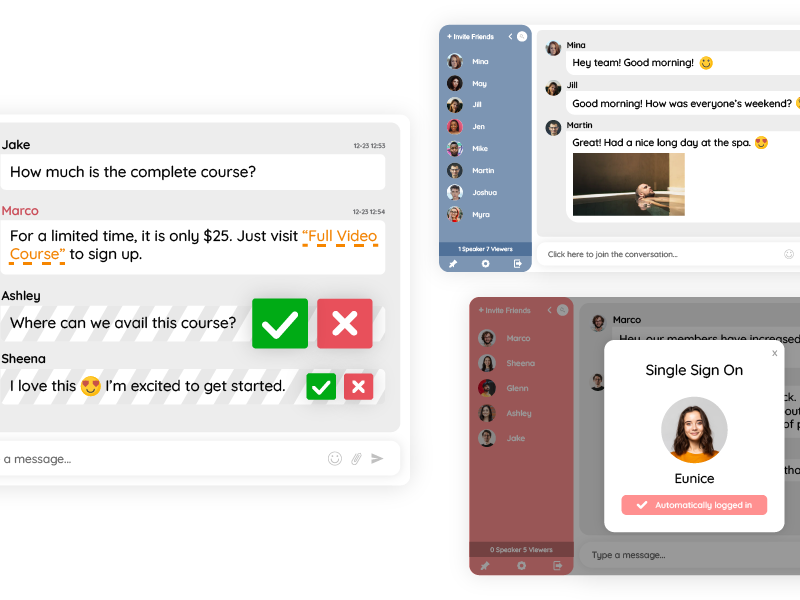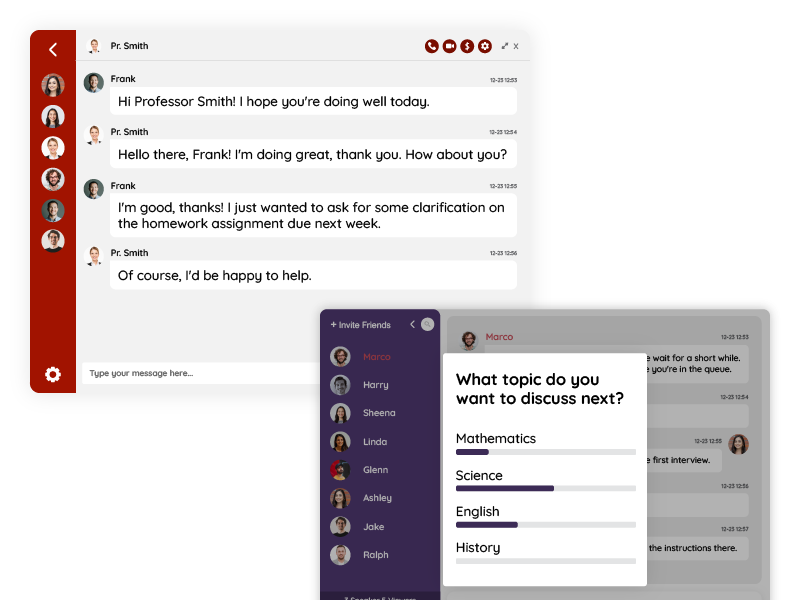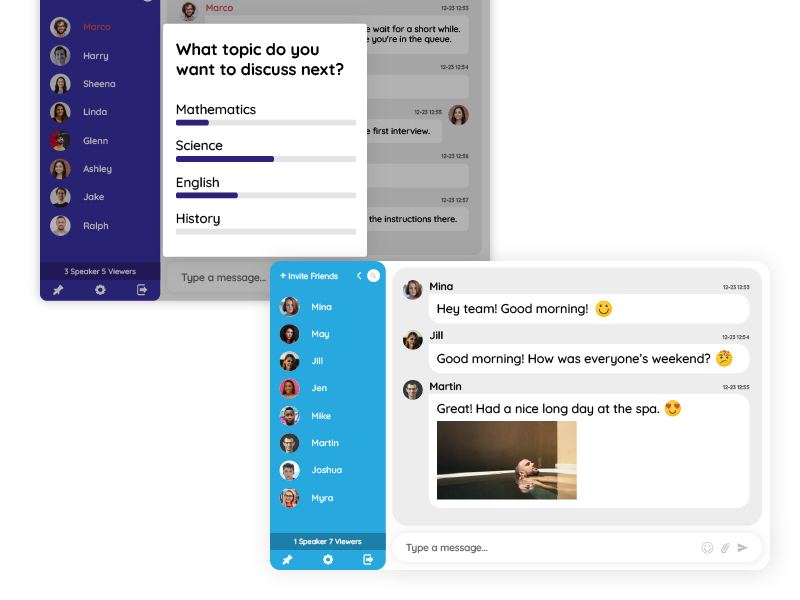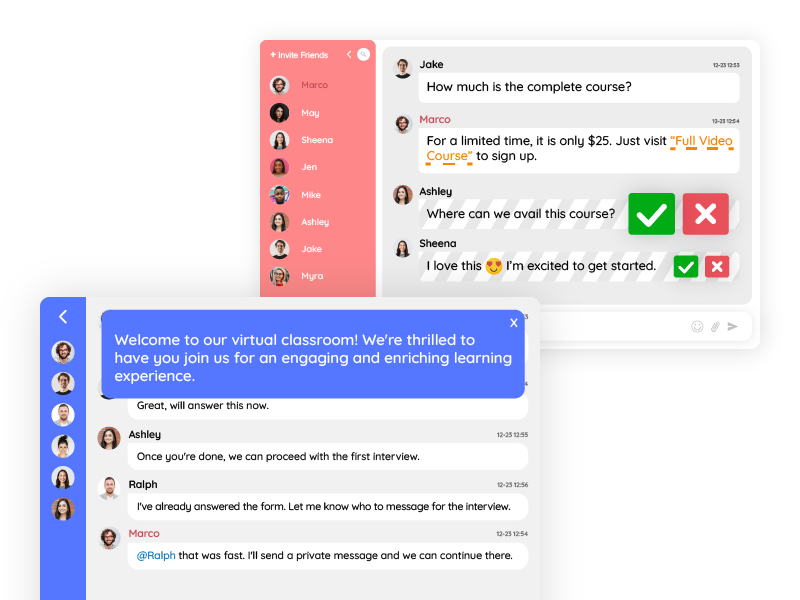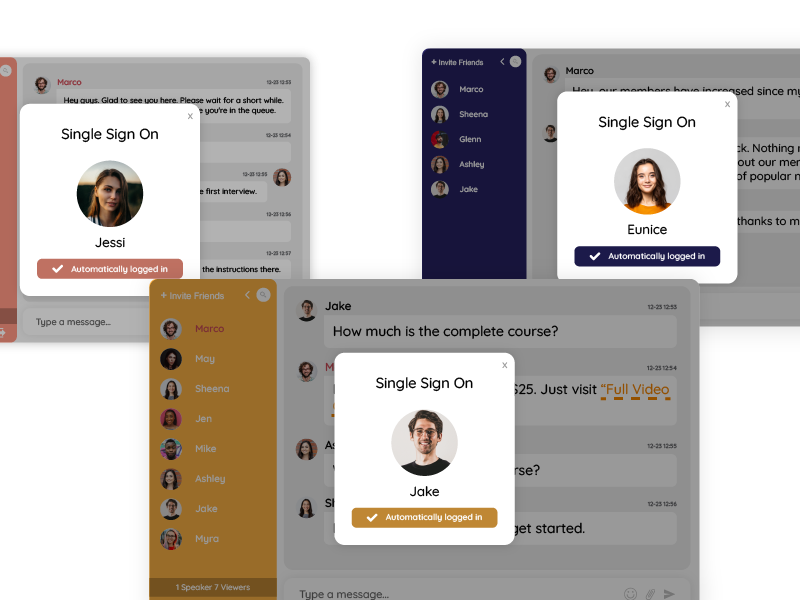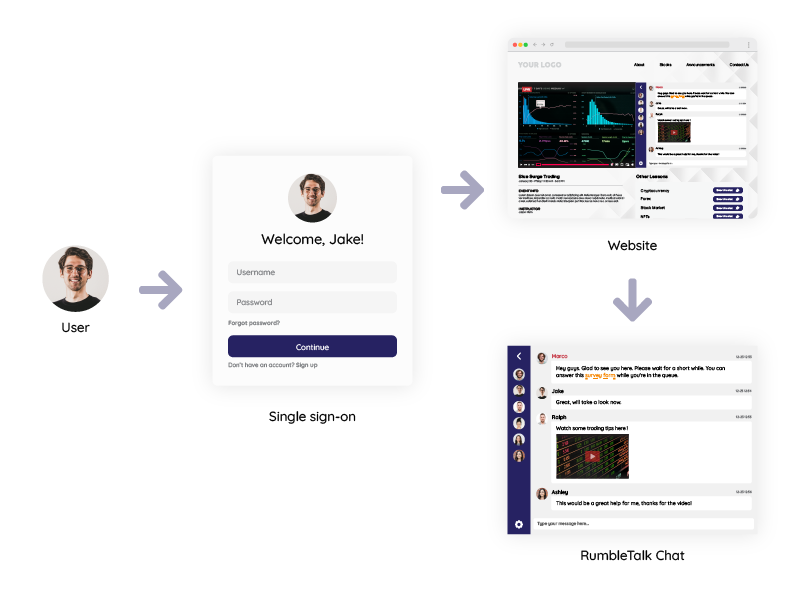Millions of online communities and membership groups are being used daily. Members’ engagement is what vibrant communities are all about. The main idea for a NoCode group chat for members emerges as easy to add to any website yet remains a powerful tool to facilitate interaction, collaboration, and relationship-building within these digital communities.
We will try to elaborate on the steps for implementing and maximizing the benefits of NoCode group chat platforms for community managers, membership site owners, online community moderators, and anyone passionate about enhancing engagement within their groups or memberships.
What is NoCode Group Chat
First, let’s understand what are NoCode tools. The concept is a software development platforms that empower users to create and integrate solutions without requiring traditional coding skills. These platforms simplify the development process, offering intuitive interfaces and drag-and-drop functionality. NoCode solutions democratize software development, making it accessible to a wider audience.
NoCode solutions offer several benefits, including ease of use, flexibility, and cost-effectiveness. They enable users to build custom solutions tailored to their specific needs without the complexity and time investment associated with traditional coding.
Group Chat Features
The RumbleTalk NoCode group chat platforms provide a range of features designed to facilitate real-time communication and collaboration among members.
Key features include:
- Real-time messaging. Members can engage in instant conversations, fostering active participation and interaction.
- File sharing. Users can exchange documents, images, and other files directly within the chat interface, streamlining collaboration.
- Integrations with other tools. Group chat platforms often integrate seamlessly with existing tools and platforms, such as project management software, CRM systems, and social media platforms, enhancing productivity and efficiency. This depends on the integration properties of your chosen platform.
These features enhance communication and collaboration within communities or large virtual events, enabling members to connect, share ideas, and collaborate on projects effectively.
Benefits of a NoCode Group Chat For Your Members
Enhanced Engagement
NoCode group chat fosters active participation and interaction among community members, driving engagement and retention. Features such as polls, reactions, and topic-based channels encourage members to share their thoughts, ask questions, and engage in meaningful discussions. These engagement-boosting features create a dynamic and vibrant community environment.
For example, RumbleTalk’s group chat platform offers a range of engagement-boosting features, including customizable chat widgets, real-time notifications, and moderation tools, empowering community managers to create interactive and engaging experiences for their members.
Improved Community Building
A group chat facilitates relationship-building and networking within communities, fostering a sense of belonging and camaraderie among members. Through casual conversations, shared interests, and collaborative projects, members forge connections and develop lasting relationships.
Case studies and testimonials highlight successful community-building initiatives powered by NoCode group chat platforms like RumbleTalk.
Here are some companies and businesses that used RumbleTalk’s NoCode group chat for their existing websites:
- GaS Digital fills up more than 2000 seats per podcast show – The podcast became a place where the listeners could, not only listen but be welcomed by a group chat room while watching their favorite podcast. It’s an exciting add-on to the already interesting topics discussed in the shows. With RumbleTalk, GaS Digital’s audiences can now participate in a community where they could have direct contact with other audiences – and the numbers will speak for themselves!
- RumbleTalk’s chat at SIGGRAPH 2023 – They used RumbleTalk so that members can chat with each other. Its main purpose was to let the participants interact with other like-minded individuals. Since they could not directly speak with the presenter or moderator, this made it easy to communicate with participants who wanted to talk about the topics being discussed.
Integration and Customization
Integration with other platforms
NoCode group chat platforms offer seamless integration with popular membership platforms such as WordPress, MemberPress, and Patreon. These integrations streamline member management and communication, enabling community managers to provide a cohesive and user-friendly experience for their members.
For example, RumbleTalk offers a WordPress plugin that allows users to easily integrate group chat functionality into their WordPress-powered websites. The plugin provides a range of customization options, including branding, theme customization, and moderation settings, ensuring that the chat experience aligns with the community’s unique identity and preferences.
In addition, with the WordPress plugin, it’s easy to integrate members. By ticking the checkbox, WordPress members will be automatically logged in.
Another option to integrate is by using SDK. When you go for this option, all you need to do is to copy and paste the code into your page.
Then, website members will be automatically logged in.
Customization Options
NoCode group chat platforms offer extensive customization capabilities, allowing community managers to tailor the chat experience to suit the unique needs and preferences of their members.
From branding and theme customization to moderation settings and user permissions, these platforms provide flexibility and control over the chat environment.
How To Select A NoCode Group Chat For Your Members
Choosing the Right Platform
When selecting a NoCode group chat solution, it’s essential to consider factors such as scalability, security, and pricing. Popular platforms like RumbleTalk offer a range of features and pricing plans to suit different needs and budgets. By comparing options and evaluating their features, community managers can choose the platform that best meets their requirements.
For example, RumbleTalk offers scalable pricing plans with features such as real-time private messaging, customizable chat rooms, and advanced moderation tools, making it an ideal choice for communities of all sizes.
Implementation Best Practices
Once a platform has been selected, community managers can follow best practices for implementing and configuring the NoCode group chat environment.
This may include setting up authentication, configuring chat settings and permissions, and promoting adoption among members. By providing guidance and support, chat administrators and owners can encourage active participation and maximize the benefits of the group chat platform.
Is your chat successful?
Metrics for Engagement
Key performance indicators (KPIs) can help community managers track the effectiveness of NoCode group chat in driving engagement and participation. Metrics such as chat activity, member participation, and retention rates provide valuable insights into the health of the community and the impact of the chat platform on member engagement.
By checking these metrics regularly, chat owners can identify areas for improvement and refine their engagement strategies accordingly. For example, monitoring chat activity can help identify popular topics and discussions, enabling chat admins to create targeted content and initiatives to further drive engagement.
Why A NoCode Group Chat For Your Members Is Popular
In conclusion, NoCode group chat solutions offer a convenient and efficient way to enhance engagement within online communities and membership groups.
Community managers, membership site owners, and online community moderators can leverage the benefits of NoCode group chat to create engaging and interactive experiences for their members.

